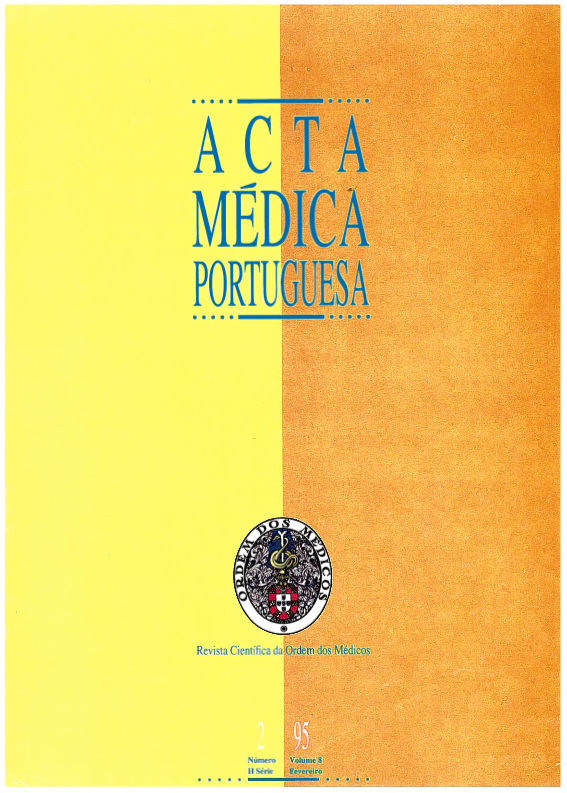Arritmias fetais. Casuística de quatro anos e meio.
DOI:
https://doi.org/10.20344/amp.2667Resumo
In a 4 1/2 year period fetal, echocardiographic studies were performed on 1600 fetuses. In 55 with arrhythmia, 44 had supraventricular ectopic beats, resolved in all, and none had heart disease. Sustained arrhythmias occurred in 11 fetuses. Atrial flutter was present in 3 all with heart disease (Ebstein disease, right atrial tumour and WPW diagnosed after birth). Another 3 fetuses had supraventricular tachycardia (SVT), all with a normal heart. In the bradycardia group, 2 had complete heart block (CHB) associated with AVSD; 2 sinus bradycardia and one had non conducted atrial ectopic beats. Digoxin was the first choice drug for tachyarrhythmia therapy; association with Verapamil, Flecainide, Quinidine and Procainamide was used in 4 of the 6. One fetus with CHB received Orciprenaline with no results. Atrial flutter resolved or improved; in SVT 2 fetuses converted to sinus rhythm and one died in utero. All fetuses with CHB died in cardiac failure. Mortality was 27% (3 cases) in utero and global 36%. In our experience most fetal arrhythmias (90%) were transitory ectopic beats or non lasting bradycardia in normal heart and did not trigger other kinds of arrhythmias. In sustained arrhythmias, heart failure and heart disease had a negative effect on prognosis.Downloads
Downloads
Como Citar
Edição
Secção
Licença
Todos os artigos publicados na AMP são de acesso aberto e cumprem os requisitos das agências de financiamento ou instituições académicas. Relativamente à utilização por terceiros a AMP rege-se pelos termos da licença Creative Commons ‘Atribuição – Uso Não-Comercial – (CC-BY-NC)’.
É da responsabilidade do autor obter permissão para reproduzir figuras, tabelas, etc., de outras publicações. Após a aceitação de um artigo, os autores serão convidados a preencher uma “Declaração de Responsabilidade Autoral e Partilha de Direitos de Autor “(http://www.actamedicaportuguesa.com/info/AMP-NormasPublicacao.pdf) e a “Declaração de Potenciais Conflitos de Interesse” (http://www.icmje.org/conflicts-of-interest) do ICMJE. Será enviado um e-mail ao autor correspondente, confirmando a receção do manuscrito.
Após a publicação, os autores ficam autorizados a disponibilizar os seus artigos em repositórios das suas instituições de origem, desde que mencionem sempre onde foram publicados e de acordo com a licença Creative Commons









